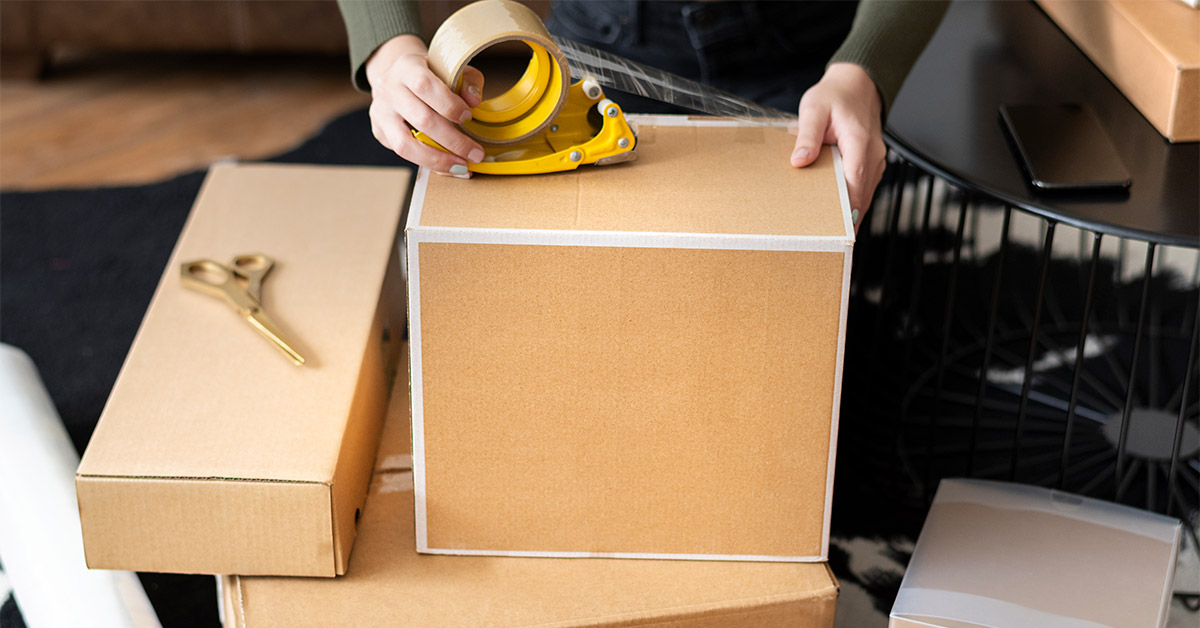When it comes to online shopping, most of us don’t give a second thought to the package delivery process in between the stages of purchase, dispatch, and arrival. The parcel’s path from an internet store to the buyer’s door is rather invisible to most people and, therefore, arouses curiosity.
What happens once a customer clicks „Purchase“? To get a more detailed view of the parcel delivery pathway, Venipak team shares all the hidden process details from the online purchase to unboxing the item at home.
FIRST STEP – PREPARATION TO DISPATCH
Once the seller obtains confirmation of a successful payment, the staff initiates the preparation of the order. E-store managers collect the ordered goods from the warehouse and pack them neatly and securely in a box, ensuring no damage occurs while in transportation.
When the package is ready, the store staff informs the delivery service provider chosen by the client regarding the intended method of delivery (home delivery, parcel locker, etc.) and prints out the transportation sticker for the parcel.
24 HOURS COUNTDOWN
As soon as the delivery service provider is informed about the prepared package, a 24-hour arrival timer is enabled. 24-hour delivery is a standard timeframe for a completed consignment when provided by most of the Baltic parcel couriers. Such delivery deadlines are not just standard – internal processes and infrastructure of carrier companies are organized in a way that makes a prolonged delivery time impossible.
There is just one critical condition to be provided with 24-hour delivery service – the courier must be notified about the parcel by 3:00 pm. This is the only way to ensure timely processing and sorting of the package that will be transported on the same night. Shipments of orders received after 3:00 pm may be delayed for processing on the following night.
SEARCH FOR OPTIMAL ROUTE
Once notifications of shipments from various cities and towns are all gathered, the search for an optimal pick-up route is initiated. Optimization of parcel pick-up efficiently saves the already limited time, helps to avoid getting stuck in traffic jams, and reduces greenhouse gas emissions. The logistics manager delegates a pick-up order to a specific courier, who is able to see the designated order on his parcel scanner and include the assigned pick-up in that day’s task schedule.
The first checkpoint for any shipment is the closest regional terminal – for example, Venipak has 11 such terminals in Lithuania, 8 in Latvia, and 4 in Estonia. The terminal’s staff weigh and measure the incoming parcels and carry out preliminary sorting. Subsequently, each set of sorted packages are routed to yet another terminal. Depending on the final destination, this can be either a central sorting terminal (Venipak has two such terminals in the Baltics, located in Kaunas and Riga) or directly the recipient‘s terminal.
For example, if the shipment is transported from Marijampolė to Tallinn, it will be routed to the sorting terminal in Kaunas. If the parcel to Tallinn should be delivered from Vilnius, then it will be sorted in Riga. And if the shipment is to reach Tallinn from Tartu, it will bypass the sorting terminals and shall be delivered directly. The decision on the route of each parcel is not a spontaneous one – it is made in compliance with a logistics map, which acts as a guide to a preferred direction for any combination of sender and recipient’s terminals. Such optimization of shipment ensures the lowest possible delivery costs.
CORRECT DATA = SUCCESSFUL DELIVERY
At 3:00 pm, the central sorting terminals initiate sorting and grouping of parcels – their main daily task. All shipments are sorted according to the recipient’s postcode, company code, and the first four letters of the street name on the delivery address. Therefore, it is essential to indicate the correct postal code of the destination while preparing the shipment – otherwise, the delivery might be routed to an unknown location. It would then have to be returned to the terminal, where its sorting and allocation would be carried out manually, and its delivery to the right address will take at least an additional day.
PRIOR TO A DOORBELL RING – ONE LAST SORTING
Sorting in a central terminal is done throughout the night, and trucks with large sets of sorted parcels board for regional terminals early in the morning. The recipient’s terminal resorts the delivered shipments and assigns them to individual couriers, who, depending on the intended type of package delivery, will either inform the recipient about the estimated delivery time in advance or notify about the box already waiting in a parcel locker and instruct on the method of collection.
Lastly, the customer hears a doorbell (or receives a text about the parcel stored in the nearest parcel locker) and experiences the joy of trying on a fresh pair of shoes, switching on a brand new laptop or a smartphone for the first time, reading a long-awaited book or tasting snacks he or she would never find in a local store.
TO SUM IT UP
A consignment’s route is not just a simple process of getting from point A to point B – it includes many people, each of whom ensures the shipment’s safety and prompt delivery. Understanding how a shipment process is carried out can help save time and ensure that the recipient receives the parcel the very next day.




